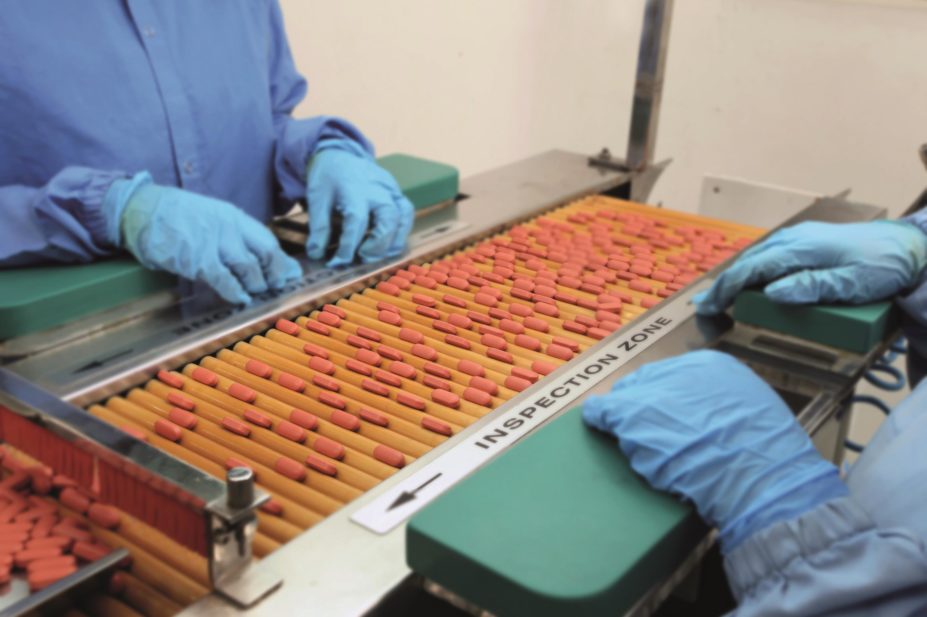
Shutterstock.com
Recommendations for addressing ongoing shortages of essential medicines in the United States, such as antibiotics, chemotherapy, and cardiovascular drugs, have been made by a group of healthcare organisations.
The group, which includes the American Hospital Association (AHA), the American Society of Anesthesiologists (ASA), the American Society of Clinical Oncology (ASCO), the American Society of Health-System Pharmacists (ASHP), the Institute for Safe Medication Practices (ISMP) and The Pew Charitable Trusts, held a summit in August 2014 and released a report detailing their recommendations on 5 February 2015.
In the report, the group says that manufacturers should be allowed to sell trial batches of drugs that meet quality specifications to mitigate shortages while plant or line upgrade approvals are awaited.
And pharmaceutical companies should be incentivised to invest in capacity and reliability to prevent disruptions to supply. This could be achieved by increasing contractual penalties for failing to supply a product or by allowing companies to increase prices.
In 2012, the US Food and Drug Administration’s ability to respond to and resolve drug shortages was strengthened by the FDA Safety and Innovation Act (FDASIA). The legislation requires manufacturers to report when certain drugs are discontinued or supply is disrupted. It also allows the FDA to expedite the review of drug applications in response to shortages and requires the FDA to maintain an up-to-date list of drugs in short supply. Although the legislation has successfully reduced the number of new drug shortages, existing shortages persist.
The group agreed that there is no single solution to drug shortages, so it is important to address both manufacturing problems linked with drug shortages and the business and any market factors involved.
Valerie Jensen, associate director of the FDA’s Center for Drug Evaluation and Research’s (CDER’s) Drug Shortages Program, told the summit that quality problems were the main cause of shortages, specifically sterility issues, presence of particulates and product formulation problems. Companies also need to be encouraged to foster a corporate culture of quality and to use quality metrics developed by the FDA that would support early collaboration between manufacturers and the agency on quality issues.
The regulatory review processes for plant upgrades and repairs needs to speed up, the group agreed. Research by the International Society for Pharmaceutical Engineering found that the biggest barrier to facility maintenance and modernisation is not cost but the time required to upgrade equipment. Regulatory approvals can take up to three years in the United States and the European Union, and seven years elsewhere.
Greater synchronisation is needed between the processes of international regulators, the summit’s report says. Such processes are currently conducted sequentially rather than in parallel.
The report notes that there are several issues related to generic drugs that raise the risk of shortages. It warns that a small group of manufacturers produce the majority of generic sterile drugs and 60 different products may be produced on a single production line. If there are manufacturing or quality problems, the generic manufacturer may not have the capacity needed to shift multiple products to different production lines or facilities.
The group recommends guaranteeing demand for a product by committing to the purchase of specified volumes of products vulnerable to shortage, either by a group purchasing organisation or through a government programme. In cases where there are no active producers of needed drugs, limited and/or shared exclusivity agreements should be established to incentivise companies to produce them.
Manufacturers should also communicate with providers to identify the dosages and concentrations most commonly used and make their products available in unit-of-use packaging to reduce waste and avoid contamination. Lisa Pearlstein, senior pain medicine and federal affairs manager at the American Society of Anesthesiologists pointed out that several drugs used by anaesthetists are not available in the most commonly used dosages, such as labetalol, dosed in 1ml increments but available only in 20ml ampoules, and certain contrast media, used in 3ml to 5ml increments but packaged in 30ml to 50ml pack sizes.


